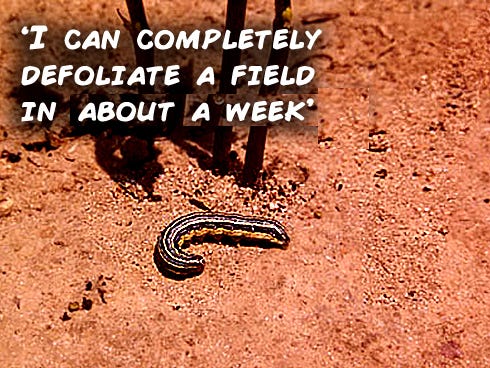
Fall armyworms were found this week in an Okaloosa County soybean field. They were also reported to have devastated a hayfield in the county.
You see, this pest can completely defoliate a field in about a week.
Armyworms 101
Fall armyworms' life cycle includes egg, larva, pupa and adult. Their life cycle's length, depending on the time of year, ranges from 30 days in the summer to 90 days in the winter.
Each female moth lays up to 2,000 eggs in her lifetime. Each egg mass is laid on foliage and contains 100 to 200 eggs. Eggs only take two to three days to hatch during the summer.
The larval (worm) stage is the most damaging to crops. Larvae consume a lot of foliage and grow quickly, especially in the summer months.
A mature larva's face has a light-colored inverted “Y." This stage usually lasts 14 days in the summer. Larvae then spin a loose cocoon and pupate in the soil. In about eight to nine summer days, an adult moth will emerge. The adult moth then lives about seven to 21 days, with females laying eggs on favored food sources.
Fall armyworms overwinter in southern Florida and southern Texas. The moths, or adult stage armyworms, are strong fliers that disperse long distances across the Southeastern U.S. over the summer.
The fall armyworm has two host strains: one feeds on corn, sorghum and cotton; one feeds on turf, pasture grasses and rice.
Dr. Rob Meagher, of the USDA-ARS, wants to know which strain feeds on soybeans. Samples will be taken and DNA will be obtained.
Guarding against armyworms
Scouting is in order for late planted soybeans and hay fields.
Treatment on young soybean plants should occur when the damage reduces the stand below the recommended plant population, according to the Mississippi Soybean Insect Management Guide.
This requires frequent walks through the fields to scout for damage and armyworms.
See http://bit.ly/1l48ltw and http://bit.ly/1yG0EUN for tips for fall armyworm control in soybeans and on hayfields.
Jennifer Bearden is an agent at the University of Florida's Extension office in Crestview.
This article originally appeared on Crestview News Bulletin: EXTENSION CONNECTION: Armyworm scouting necessary for late soybean, hay and other plantings
